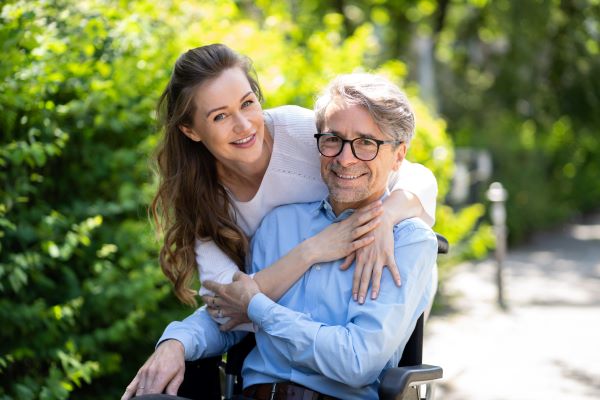A band-aid-like device promises to ease incontinence
Australis Scientific has developed new technology to alleviate lower urinary tract symptoms that is both cost-effective and user-friendly. The company is one of three to receive funding in 2022 from the NSW Health Medical Devices Fund.
We’ve all had the unpleasant urge to use the restroom. A rare occurrence for the majority of us can be a daily struggle for some. Overactive bladder (OAB), which can manifest as urinary incontinence, affects up to 38 per cent of women and 16 per cent of men. As we get older, bothersome urinary symptoms become more prevalent, affecting more than 80 per cent of people over the age of 75.
An Australian-led Harvard Medical School team has developed a novel Smart Patch technology to treat symptoms of OAB, including urinary frequency, urgency and nocturia (waking multiple times at night to urinate). These issues, also known as FUN symptoms, are anything but fun, says Nicky Agahari, CEO at Australis Scientific and the mind behind the In-Confidence™ Smart Patch.
The technology was one of three supported by the NSW Health Medical Devices Fund (MDF) in 2022, receiving $750,000 to facilitate human clinical trials, set to begin in the first quarter of this year.
Current treatments are often unsuitable for older adults, who make up most patients suffering OAB. Surgery is often too invasive for the elderly, and current guideline medications have problematic side effects and can increase the risk of dementia. Because of treatment barriers and the stigma associated with OAB, most people self-manage their symptoms at home with hygiene products, such as adult nappies. “Market reports show that the adult nappy market is significantly larger in dollar value than the overactive bladder treatment market,” Agahari says. “That’s really unfortunate. But there is no need to put up with it.”
Percutaneous tibial nerve stimulation (PTNS) is a third option that is effective but underused due to its high cost and time-consuming administration.
Sacral nerves, which stimulate the bladder, branch off into a large group of nerves known as the pudendal nerves. These allow bladder stretch receptors to communicate how full the bladder is to the brain. The brain then decides when a person needs to urinate.
As we age, the bladder begins to spasm, and the stretch receptors activate before the bladder is full, sending the “full bladder” message to the brain too early. By stimulating the posterior tibial nerve in a patient’s ankle, a signal is transmitted to the pudendal and sacral nerves that interact with the bladder, correcting the neural signal between bladder and brain, and normalising urinary symptoms.
The current method of delivering PTNS requires a urologist to insert an acupuncture needle electrode into the patient’s ankle to stimulate the posterior tibial nerve. The treatment takes 60 minutes and must be repeated once a week. “As you can imagine, urinary incontinence sufferers don’t engage well with the nature of treatment and compliance is very low,” Agahari says.

A device designed with the patient in mind
When Agahari’s grandfather developed urinary incontinence, Agahari wanted to find a solution to that discomfort. One night, while rushing to the toilet, his grandfather fell and broke his back. The accident shook Agahari, who was then working for a large med-tech company that had commercialised OAB devices which had to be surgically implanted. “It frustrated me knowing that there were a lot of people, particularly elderly people, suffering, but not many of them were surgical candidates,” he says. “I wanted to find a way that was non-invasive because that’s what was really needed.”
Agahari created a device based on PTNS that does not require an acupuncture needle and continuous administration by a clinician. The device has come a long way from the prototype Agahari tested on his grandfather, which resembled a prison bracelet. Today, Australis Scientific’s SmartPatch is slightly bigger than a band-aid that patients can apply on the bony prominence on their ankle for one hour a week as they go about their day. “Rather than a long, 34-gauge needle that must be precisely placed, we have a larger surface area with 120 0.8 millimetre needles that offset the need for one single, deep penetrating needle,” Agahari explains. The microarray needle electrode penetrates the first layer of skin enough to reduce its electrical resistance but not cause pain. “We designed it having the elderly patient in mind. It is just as familiar as putting on a band-aid.”
From the benchtop to the clinic
A Harvard fellowship allowed the Australis Scientific team to test the device on healthy participants. They found the microarray needle was as effective as a deep penetrating needle in stimulating a nerve.
Thanks to the NSW Health MDF grant, the team is now planning 12-week-long studies comparing the SmartPatch to a sham device, a method used in medical trials to help researchers determine the effectiveness of a treatment, the acupuncture version of PTNS, and anti-muscarinic drugs. “Without something like the Medical Devices Fund, it’s really difficult to take things from the benchtop to humans,” Agahari says.
The team will be enrolling patients across Australia as part of their early feasibility multi-site trial. “The more urologists we can get involved in this, the more traction we’ll have to change how the urology community manages urinary tract symptoms and to improve quality of life for so many sufferers of this debilitating condition.”

Updated 2 years ago